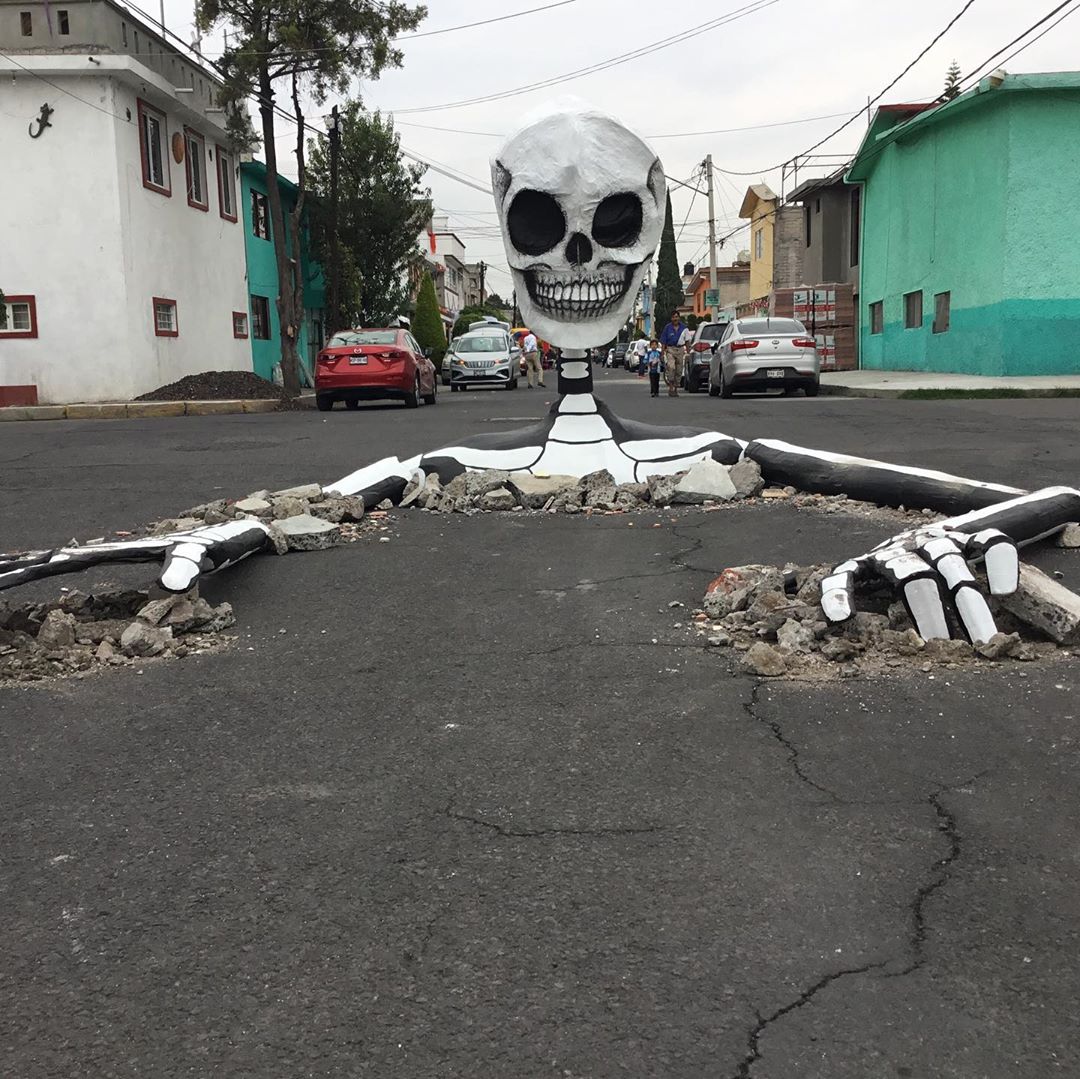
Probably one of the best people to go thrifting with, Hoda Zarbaf utilizes recycled fabrics and old furniture to hand-stitch ornate sculptures. Using sexuality and humor, Zarbaf interrogates representations of womanhood through abstract forms. There’s her chair sculpture with a vulva-like cushion, Vaginal Rapture, with rainbow shapes exploding out of it like an epic moment of release. Another piece, Down-time, features a dominatrix-like woman reclining on a big cushion. Farsi text on her back alludes to her sensitive heart, which contrasts the stereotypes that come to mind because of her tattoos and fishnets. Zarbaf’s work delves into women’s intimate moments and emerges with a three-dimensional portrayal of varied experiences.











 To mark the Mexican holiday of Día de Muertos, artist Raymundo Medina of the Jaén Cartonería family collective dreamed up enormous skeletons that appear to be emerging from the pavement. The massive cardboard works can be found in Santa Cecilia Tláhuac, Mexico. The artist often works with Yaocalli Indians in erecting these creations, Miguel Angel Luna says. The annual holiday runs through tomorrow.
To mark the Mexican holiday of Día de Muertos, artist Raymundo Medina of the Jaén Cartonería family collective dreamed up enormous skeletons that appear to be emerging from the pavement. The massive cardboard works can be found in Santa Cecilia Tláhuac, Mexico. The artist often works with Yaocalli Indians in erecting these creations, Miguel Angel Luna says. The annual holiday runs through tomorrow. The samurai's enormous impact in Japan was even felt in fashion, and in Tetsuya Noguchi’s sculptures and paintings, contemporary fashion influences their own garb. "This Is Not a Samurai" is the artist's new show at Arsham/Fieg Gallery in Kith Soho. The micro-gallery in New York City has garnered praise for giving smaller works attention. The show kicks off today at the small space.
The samurai's enormous impact in Japan was even felt in fashion, and in Tetsuya Noguchi’s sculptures and paintings, contemporary fashion influences their own garb. "This Is Not a Samurai" is the artist's new show at Arsham/Fieg Gallery in Kith Soho. The micro-gallery in New York City has garnered praise for giving smaller works attention. The show kicks off today at the small space.
